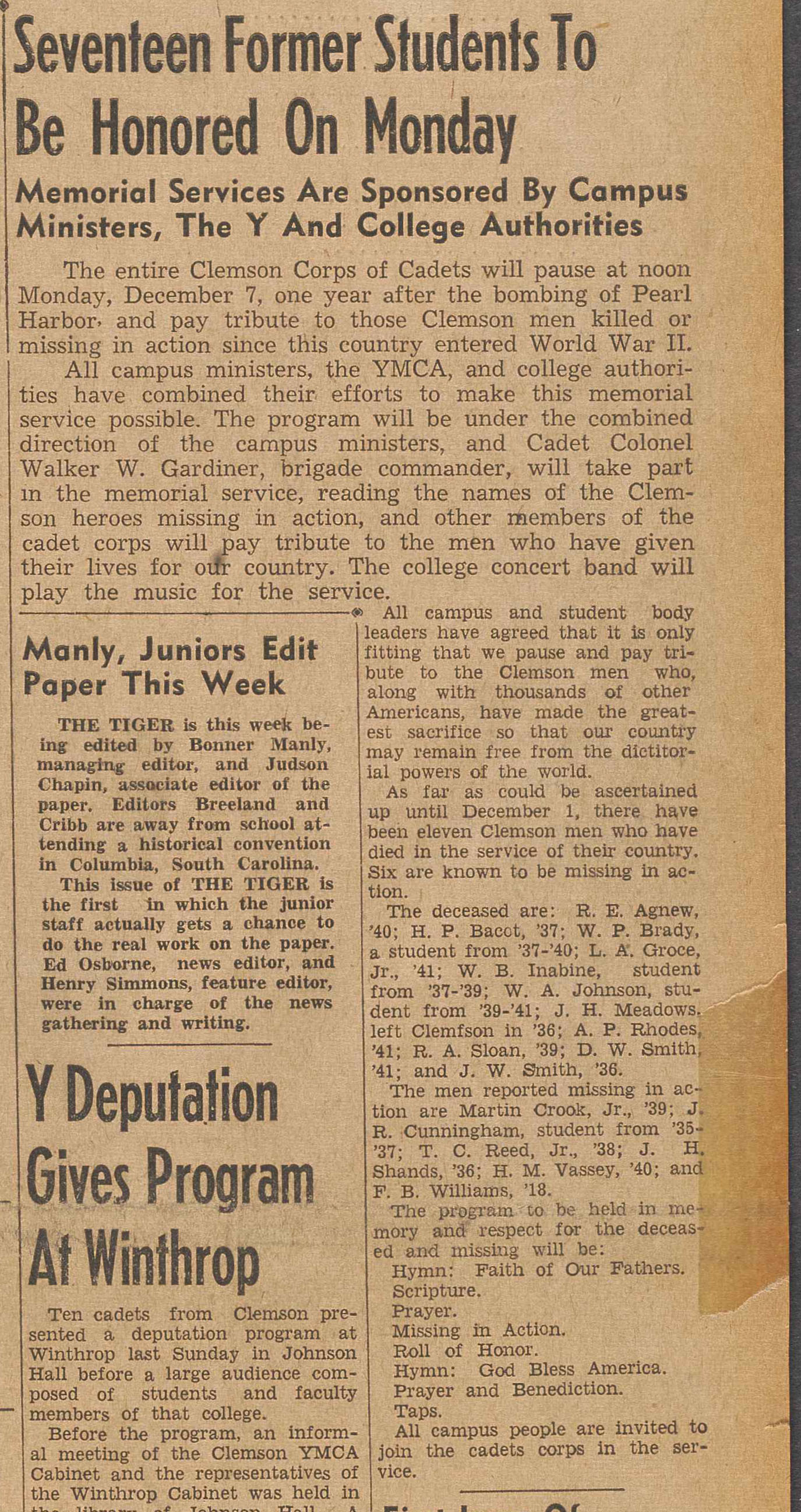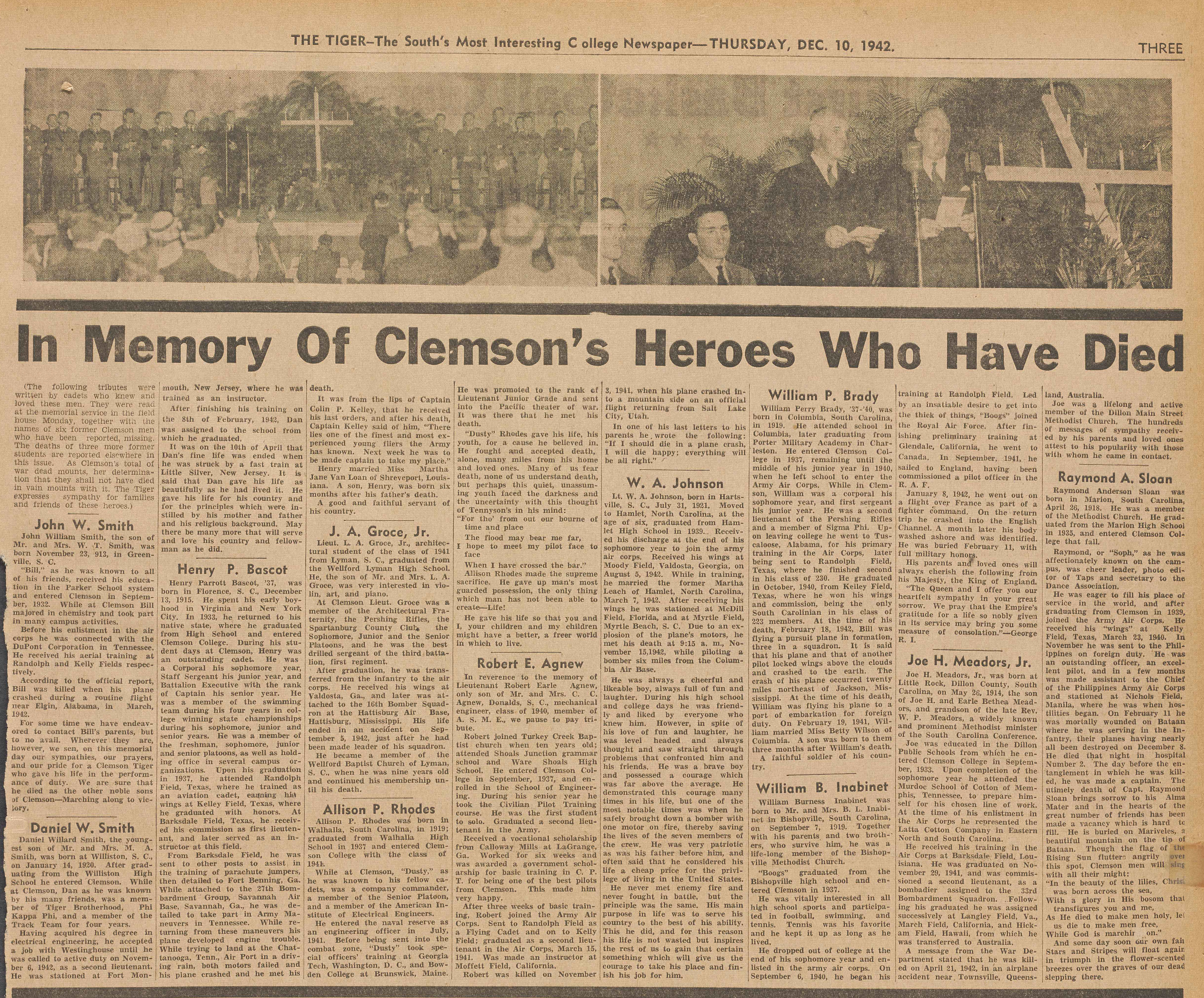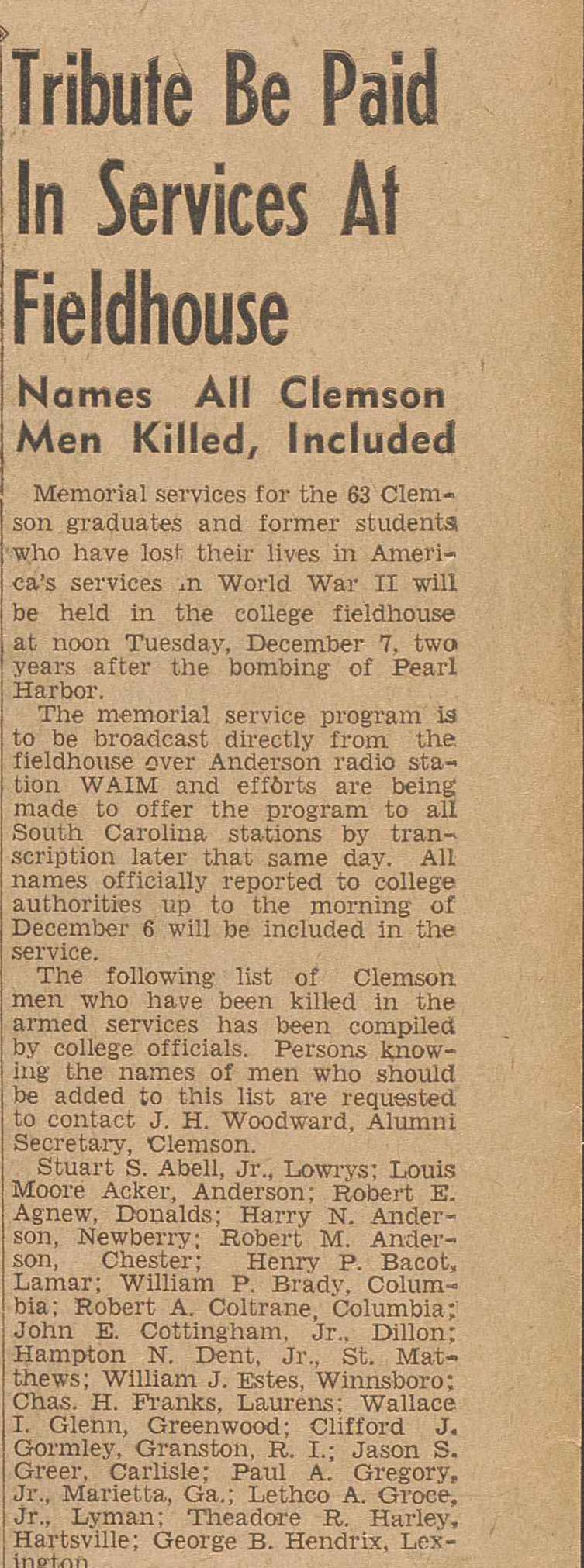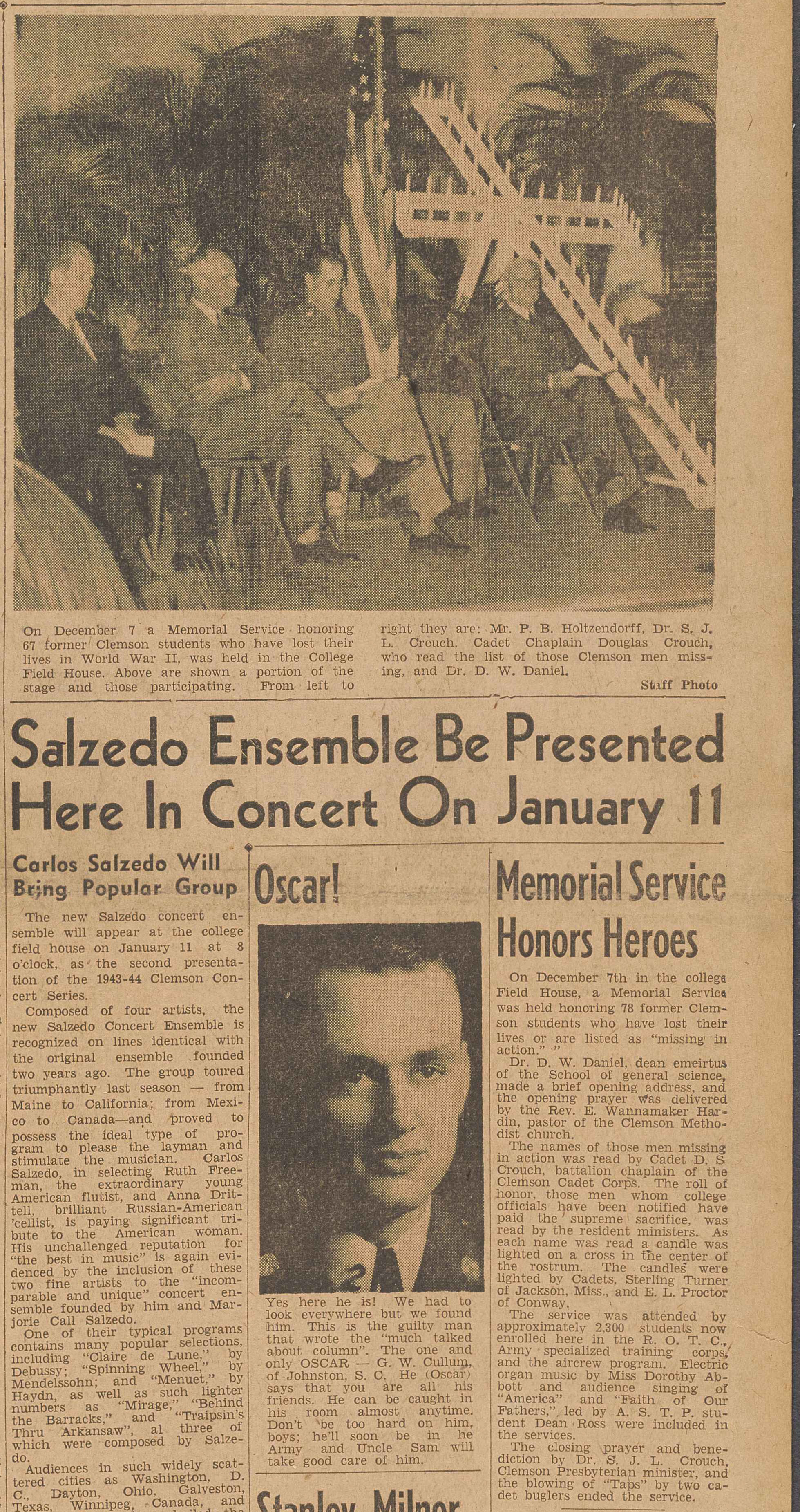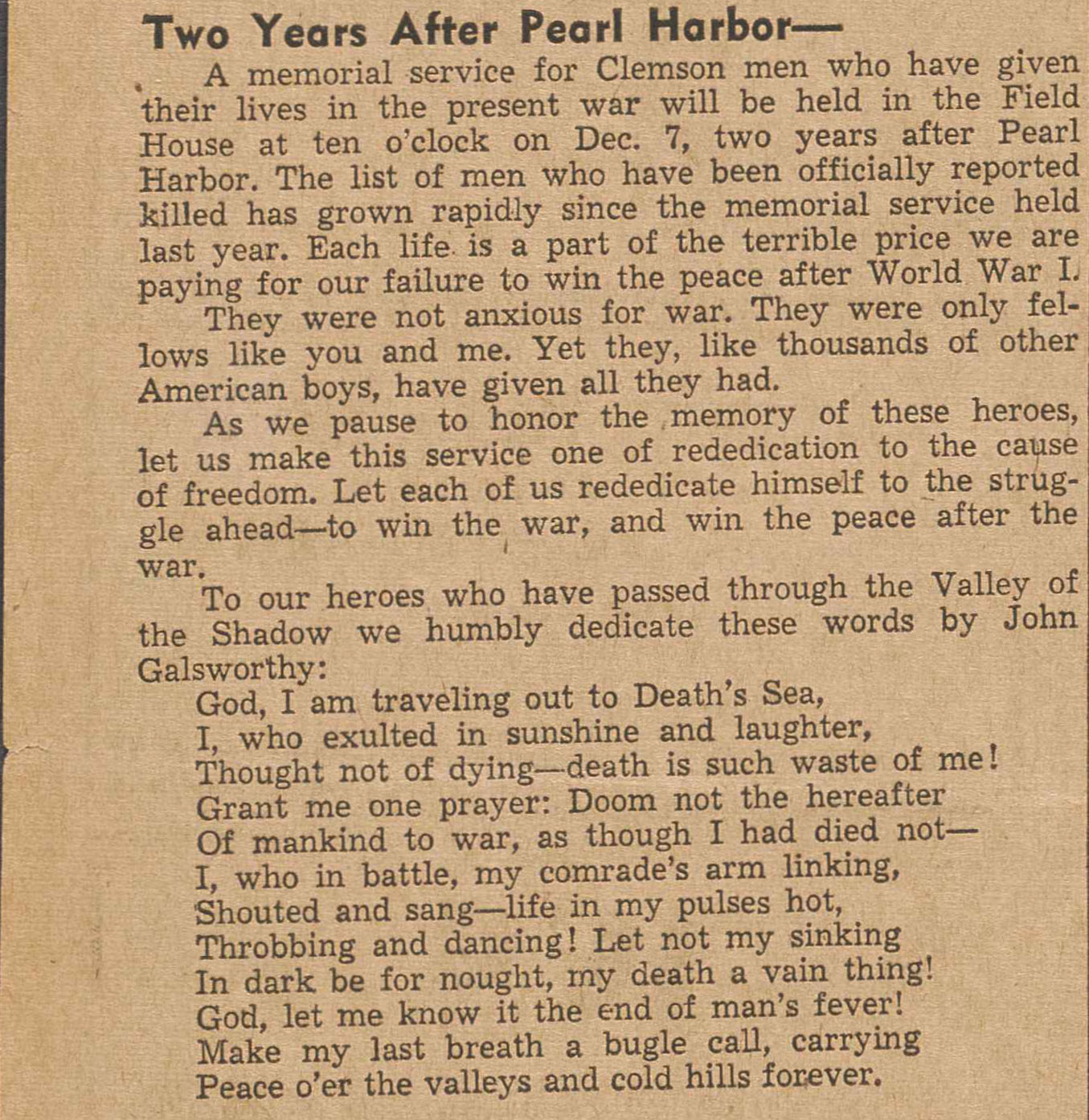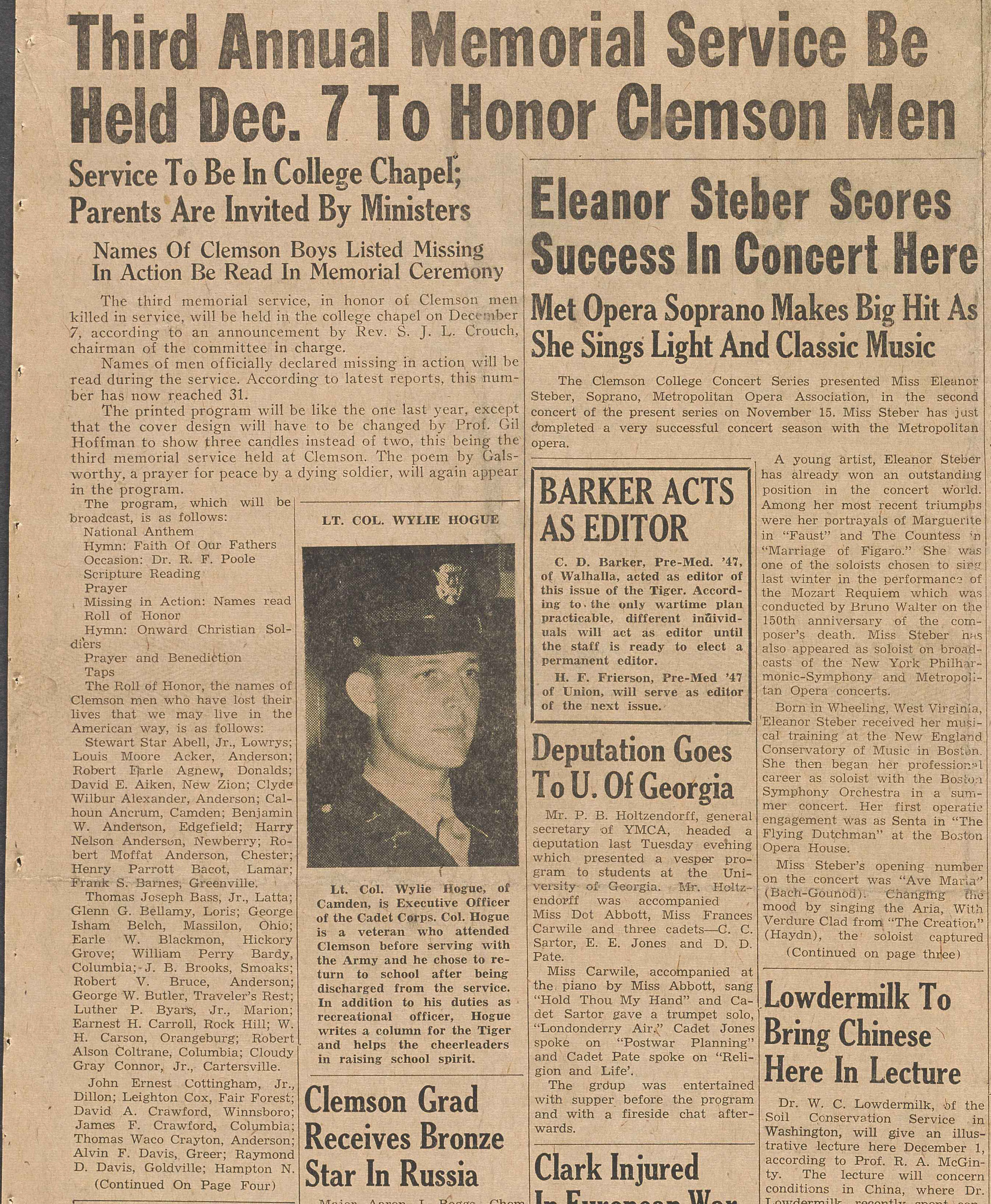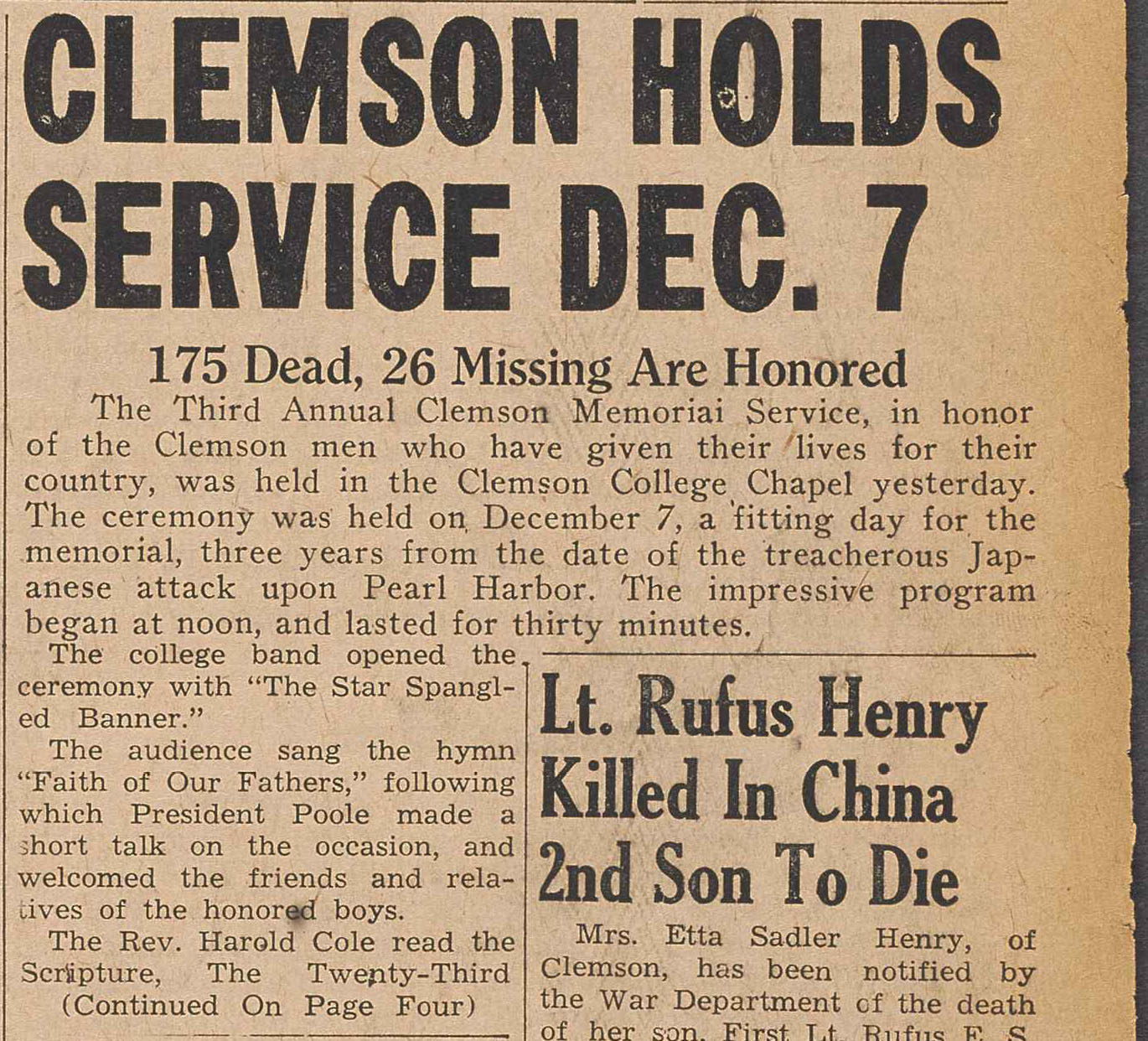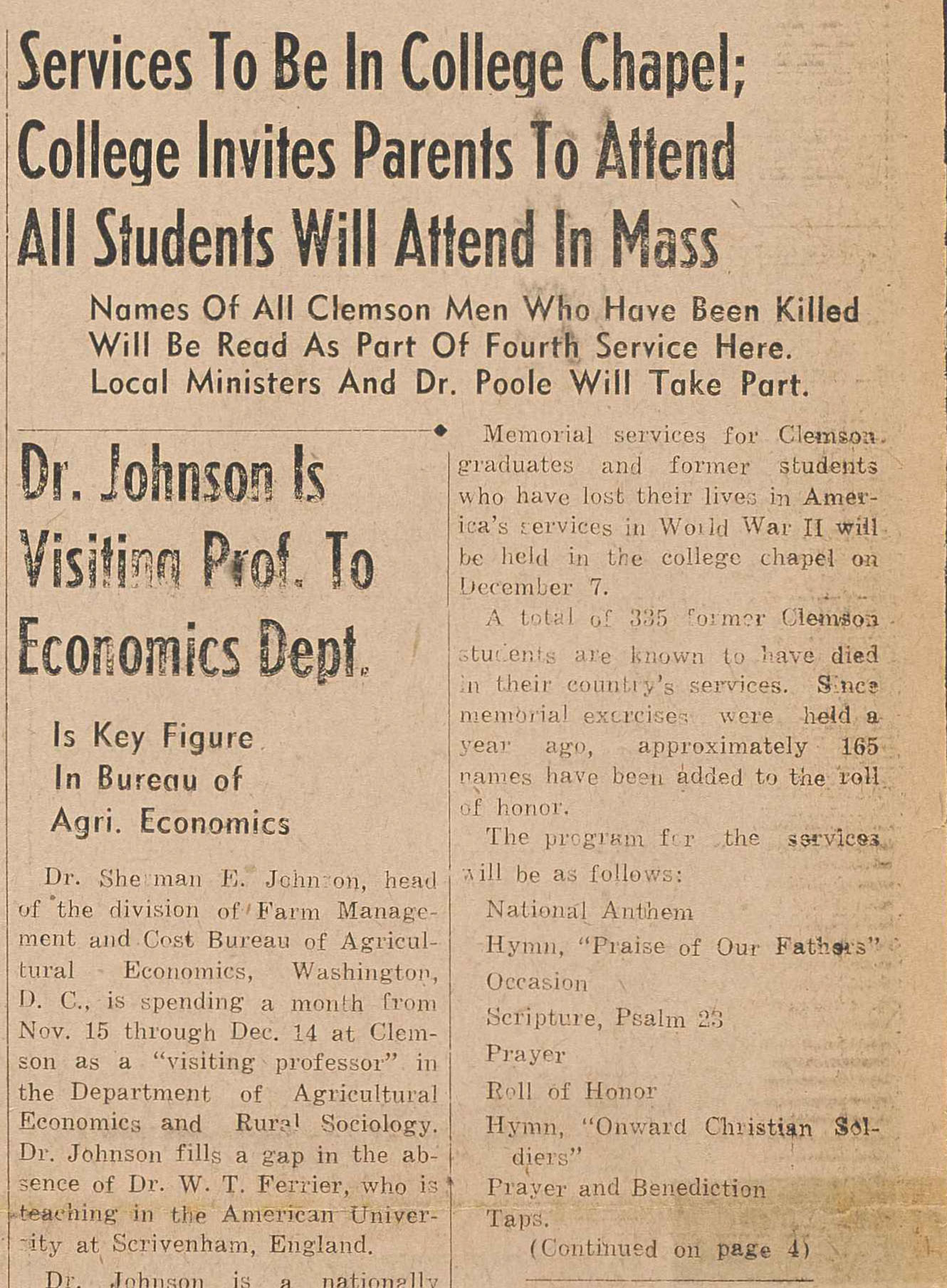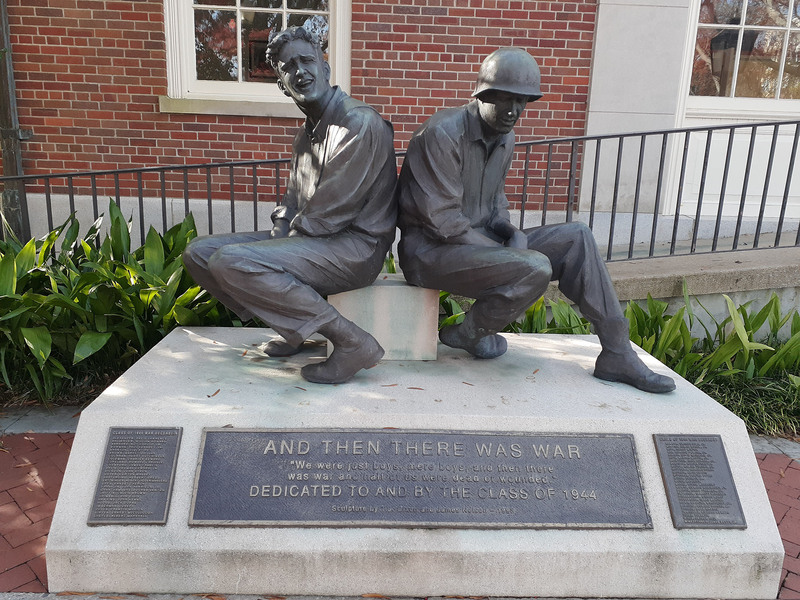In Memoriam
Every year, on December 7, the anniversary of the attack on Pearl Harbor, a memorial service was held at Clemson College for those men killed or missing in action. The cadets, the U.S. Army and Air Corps trainees now at the college, the bereaved and worried families, and the faculty, staff, and their families filled the College Chapel. The services were organized by the YMCA, led by P. B. Holtzendorff, and the churches of the community, led by the Rev. Dr. Sydney J. L. Crouch of Fort Hill Presbyterian Church (Reel 307).
The first service on December 7, 1942 commemorated eleven Clemson men killed, and the congregation prayed for the safety of six missing in action. By December 7, 1945, the known dead had reached 345. The total number of Clemson men killed during World War II has not been officially determined; estimates range from 376 to 390. Most of the fallen served in the Pacific (Reel 307-308). It is known that the Class of 1939 lost twenty-six members, the Class of 1941 fifty-seven, and the Class of 1944 fifty-three (Korth 48-49; Hudgins).
In addition to the wartime memorial services, the college has commemorated the sacrifices of Clemson men in more lasting ways, such as the Scroll of Honor Memorial. Dedicated in April 2010, the Scroll of Honor Memorial includes a circular mound or barrow to represent the eternal values of duty, honor, and country and the unity of those who served. The names of the fallen are engraved randomly on the stones around the barrow, symbolizing the fact that there is no pattern to death in war. Only their names and class year are engraved on the stones; they share the common bond of Clemson men. The stones are mounted in the barrow at an angle so that visitors must bow their heads to read the names on the stones, as if in reverence to the memory of the heroes (“History of the Scroll of Honor”).
Another poignant memorial is the bronze statue in front of Mell Hall. Commissioned by the Class of 1944 for its fiftieth anniversary, it was dedicated on Feb. 9, 1993. The project grew out of conversations that sculptor T.J. Dixon had with Clemson men who had served in World War II. “How can I make you understand?” said one veteran. “We were boys, mere boys, and then there was war and half of us were dead or wounded.” Together with James Nelson, Dixon captured this life-changing experience by depicting a carefree student sitting back-to-back with a weary soldier version of himself (Hudgins). Beneath the men, on either side of the veteran’s haunting words, are two plaques listing the fifty-three names of members of the Class of 1944 who were killed in the war.
